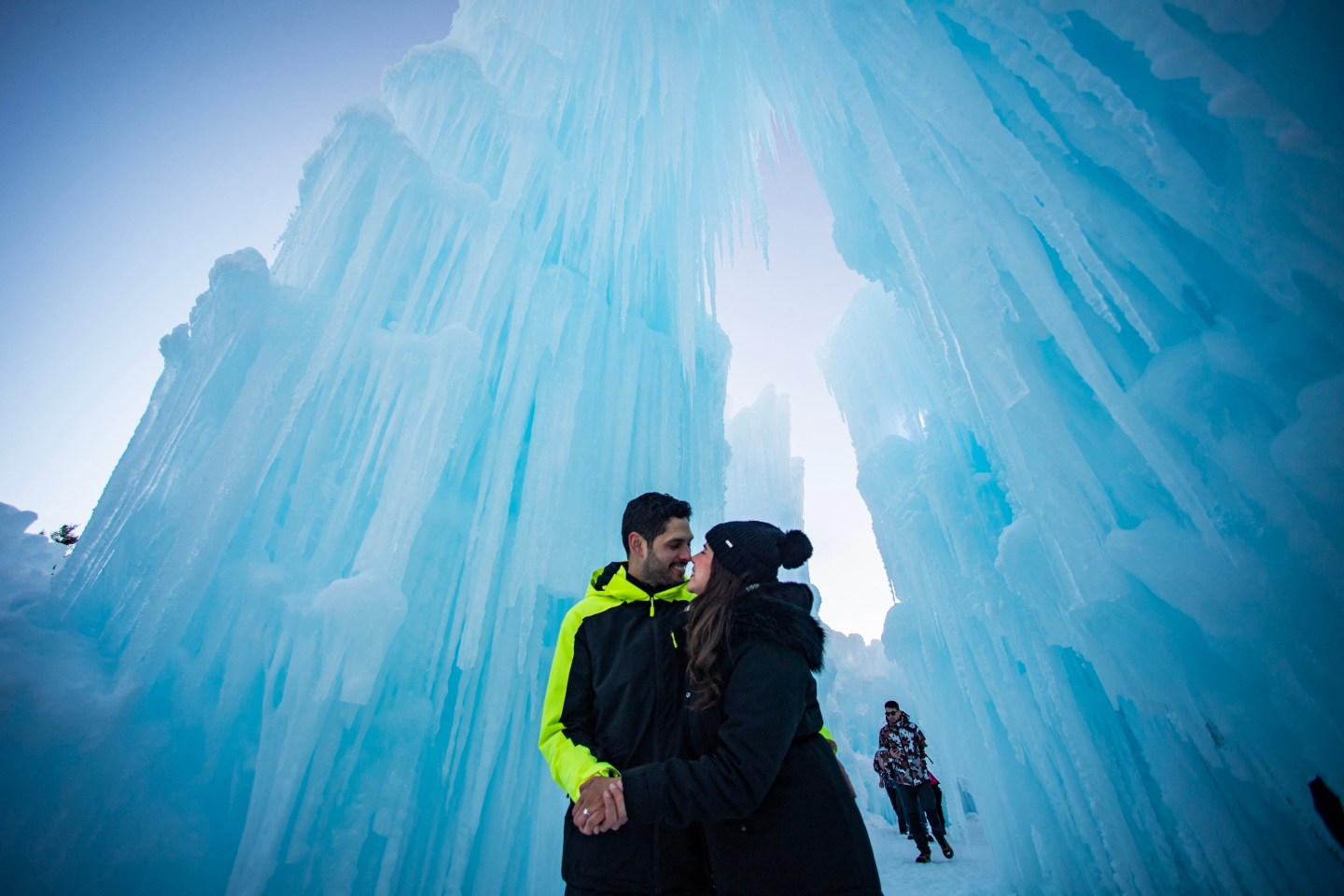A couple hours after midnight, one to seven nights after the August full moon, Florida coral are in the mood.
With a swimmer’s synchronicity, they release their eggs and sperm, which stream toward the starlit surface, “like reverse snow happening in the water,” as described by frequent coral spawning observer Allison Delashmit, the director of operations for Mote Marine Lab’s Elizabeth Moore International Center for Coral Reef Research & Restoration on Summerland Key, on the south side of the Keys’ famous Seven Mile Bridge.
From Delashmit’s perspective, amid a flotilla of “scientists, volunteers, and anyone with a boat that was willing to sit out in the middle of the night and wait for this event to happen,” the annual phenomenon is beautiful, but incredibly inefficient. When the bundles of eggs and sperm detonate on the surface, the latter has 20 minutes to reach and fertilize the former. Chances of a fertilized egg reaching maturity is about one in a million. Every 25 years. That’s in a relatively healthy reef.
The Florida reef, which stretches from the upper mainland to Key West, is not a healthy reef. Stemming from a 2014 infection thought to originate from a dredging project outside Miami, the bacterial blight of Stony Coral Tissue Loss disease coupled with warming seas has left the reef 98% to 99% bleached, a state scientists call functional extinction. Absent a critical density of fit, reproductively capable coral, fertilization in the wild becomes extremely difficult. “So we have to help Mother Nature out,” Delashmit says. Without human intervention, guided by science and supported by tech, the Florida reef won’t survive.

While the Mote team still does the August overnight shifts, collecting the sperm and eggs in a net and quickly transporting them back to the lab for fertilization, that can also be inefficient—because if there’s one thing more reliable in Florida in August than tantrums in line at Splash Mountain, it’s nighttime thunderstorms. “And if you miss your one night because you’re run off the water by a storm,” Delashmit says, “then you’ve missed a whole year of new genetic material.”
To hedge against these uncontrollable elements, Mote has started a new process of tank-spawning. Inside and outside the building, a hurricane-proof concrete lasagna of laboratories, shallow, burbling tanks support up to 50,000 coral babies growing cement plugs the size of kitchen cabinet knobs. These pieces are cut from healthy coral in a method called microfragmentation.
“Cutting activates a growth response, so these grow 50 to 60 times faster than they would naturally in the wild,” Delashmit says. When these animals reach roughly three centimeters in diameter, the dive team transports them to a dead coral head on the reef. “We drill holes in a circular, pepperoni-pizza pattern, stick the plugs in those holes, and the coral quickly grows onto the dead coral head.”

Not all of the animals head to the reef. Some remain at the lab as parent colonies for reproduction led by Dr. Hanna Koch and biologist Cody Engelsma. In a large aquarium filled with water pumped from the canal outside the lab, “we are going to be able to manipulate conditions to what we need them to be for the corals to spawn on our schedule and not their own,” Delashmit says. Heaters maintain the ideal water temperature. Lights mimic the romantic glow of the full moon. These coral get everything but a bottle of wine. In addition to the natural spawning in August, the plan is to trigger a spring cycle starting in 2022, guaranteeing a healthy crop of fertilized eggs that can be raised in the lab and eventually, transplanted out to the reef.
Mote and other marine labs have seen promising results with reef restoration, but in the face of climate change, Delashmit admits, “It’s not a savior, it’s a Band-Aid. Doing restoration is not enough, so we’re really trying to dig into the research side of things,” which is where Dr. Courtney Klepac comes in.
“I’m looking for corals that can keep the pace with ocean warming and climate change or that have a naturally inherently higher tolerance that [will allow them to] survive,” Klepac says.
For comparison’s sake, consider an apple farmer who wants to see if her land is best suited for growing Granny Smith, Fuji, or Gala apples. After selecting the best performer—say, the Fuji—she can select the strongest, tastiest, most pest-resistant trees in her Fuji orchard and graft them into new specimens. Whether apples or Labradoodles or coral, the principle is the same: selective breeding. But instead of doing this over generations, Mote has sped up the process to two months. Klepac has accelerated it even further through a computer-controlled automatic system she co-developed while at Old Dominion University, the Coral Bleaching Automated Stress System (CBASS), which processes specimens in one-day experiments.
“The summertime maximum [ocean temperature] average is about 80 degrees, so we’ve been stressing our corals at 86, almost 87 degrees, based on end-of-century predictions,” Klepac says. She measures protein levels, density, photosynthesis productivity of coral’s symbiotic algae, and other factors, “and then the other side that, which I’m excited to bring to MOAT, is my molecular work where I look at gene expression. After an experiment, the physiology can tell me what the coral is feeling, but the genetics can give me a precursor to the physiology, completing the picture of the stress response.” When the physiological data from one piece of Acropora cervicornis (staghorn coral), for example, shows less stress than another piece, “I can look and see if there’s any genetic marker for that resistance.”

Into Mote’s gene bank strong specimens go. “If I can tell [Koch and Engelsma] which corals are doing the best, she can focus on breeding those stronger corals, and then we can just keep populating the quote-unquote strong corals that have the most promising mechanisms for surviving long-term change,” Klepac says. “Ultimately this culminates into kind of assisted evolution.”
If that term sounds meddlesome, it is. Humans created this problem and have to solve it, especially in the face of an increasingly inhospitable future ocean. “Our reef is the crown jewel of Florida, but really the crown jewel of the United States, and cannot naturally recover on its own,” Delashmit says. “It will take swift human intervention to provide the stopgap to give the reef a fighting chance.”












